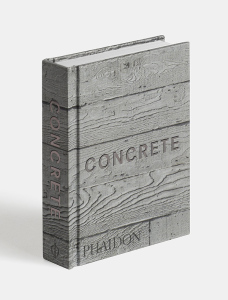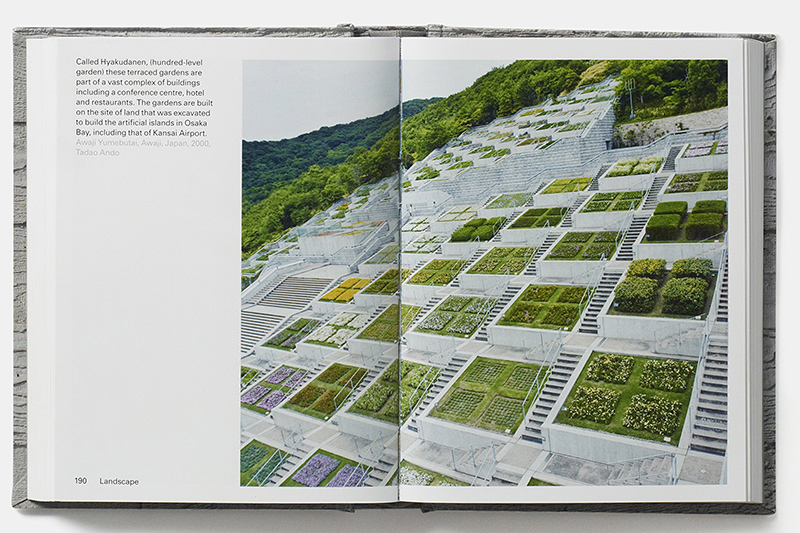BOOK:Concrete,Phaidon Publications
 Among the ancient Assyrians and Babylonians, the bonding substance most often used was clay. The Egyptians developed a substance more closely resembling modern concrete by using lime and gypsum as binders. Lime (calcium oxide), derived from limestone, chalk, or (where available) oyster shells, continued to be the primary pozzolanic, or cement-forming, agent until the early 1800s. In 1824 an English inventor, Joseph Aspdin, burned and ground together a mixture of limestone and clay. This mixture, called portland cement, has remained the dominant cementing agent used in concrete production.-With 384 pages and 179 illustrations the book “Concrete” by William Hall and Leonard Koren, is an ode to one of the most versatile construction materials in the world and comes in a new, and easy-to-use stylish size. The book presents fascinating and beautiful concrete buildings by some of the most celebrated architects of the last century, it features familiar projects from Le Corbusier and Frank Lloyd Wright alongside work from some of the leading contemporary architecture including Zaha Hadid, Herzog & de Meuron, and many lesser-known newcomers.-Dimitris Lempesis
Among the ancient Assyrians and Babylonians, the bonding substance most often used was clay. The Egyptians developed a substance more closely resembling modern concrete by using lime and gypsum as binders. Lime (calcium oxide), derived from limestone, chalk, or (where available) oyster shells, continued to be the primary pozzolanic, or cement-forming, agent until the early 1800s. In 1824 an English inventor, Joseph Aspdin, burned and ground together a mixture of limestone and clay. This mixture, called portland cement, has remained the dominant cementing agent used in concrete production.-With 384 pages and 179 illustrations the book “Concrete” by William Hall and Leonard Koren, is an ode to one of the most versatile construction materials in the world and comes in a new, and easy-to-use stylish size. The book presents fascinating and beautiful concrete buildings by some of the most celebrated architects of the last century, it features familiar projects from Le Corbusier and Frank Lloyd Wright alongside work from some of the leading contemporary architecture including Zaha Hadid, Herzog & de Meuron, and many lesser-known newcomers.-Dimitris Lempesis




